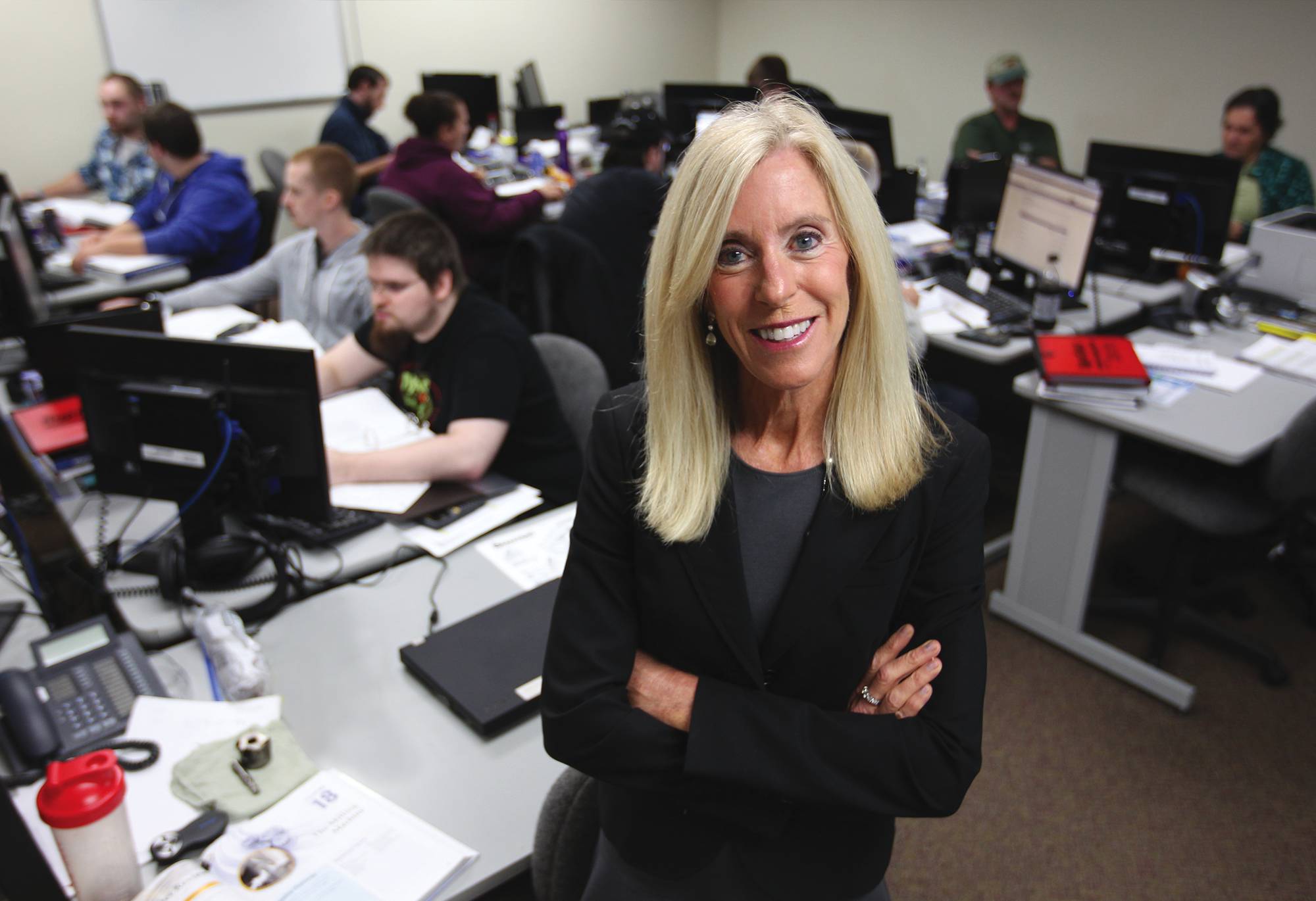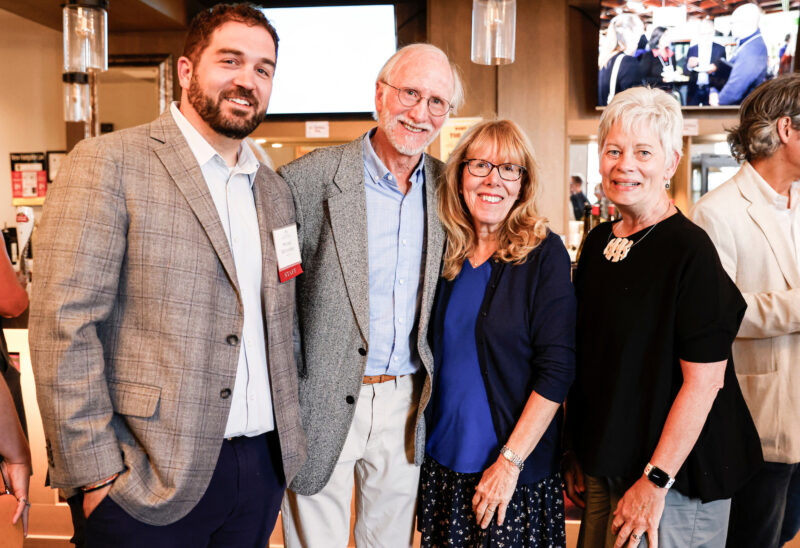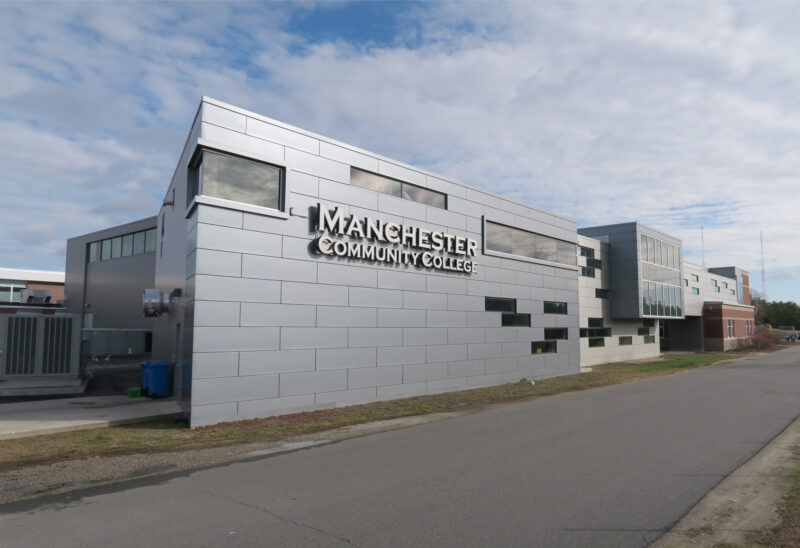At Hypertherm in the Upper Valley, scores of machining technicians are producing precision metal-cutting equipment. At Albany International in Rochester, hundreds of workers are manufacturing advanced composite components for the aerospace industry. At Dyn in Manchester, cadres of computer engineers are writing and running software to improve Internet performance. At Hitchiner Manufacturing in Milford, another 650 people are making metal parts for aerospace, defense, energy and automotive uses.
The products that these companies produce are not similar, or even necessarily related. But the companies all represent sectors that help drive New Hampshire’s economy. They all provide well-paying jobs for workers skilled in mathematics and science.
And they are all worried that the next generation of workers won’t have the math and science chops they need to take these jobs and keep production humming.
“These are really highly-skilled positions,” said Vice President of Corporate Social Responsibility Barbara Couch. As manufacturing processes become more and more sophisticated, the positions require “a higher level of thinking, knowledge and skills.”
A new initiative, convened by the New Hampshire Charitable Foundation, has state leaders in business, education, government and the nonprofit sector all working together to help New Hampshire students stay engaged in math and science — and come out of school ready for solid careers right here at home.
The Smarter Pathways initiative is focused on strengthening pathways from school to jobs in science, technology, engineering and mathematics (STEM). Increasing degree attainment in those fields is one major focus of the initiative.
“It’s really exciting to see this,” said Dyn CEO Jeremy Hitchcock, who served on the Smarter Pathways study advisory committee and whose company is a sponsor of the initiative. “This is a great region, and we’re hopefully accelerating the supply of talent.”
A new study shows that there is good reason to be concerned about that talent pipeline — and has spurred the joint action.
![]() Download the New Hampshire STEM Pipeline report (PDF)
Download the New Hampshire STEM Pipeline report (PDF)
The Foundation-commissioned study, “Smarter Pathways: Strengthening New Hampshire’s STEM Pipeline,” shows that interest and proficiency in mathematics and science diminishes dramatically as students progress through school — to the point where the majority of students opt out of further study in those fields.
By fourth grade, only 51 percent of New Hampshire students are proficient or better in science. By eighth grade, that number drops to an alarming 31 percent. Math proficiency slides from 68 percent in eighth grade to 37 percent in 11th grade.
The numbers are startling.
“The well-being of our communities is dependent on opportunities for children and youth, and on a strong supply of workers for well-paying jobs — all of which support the strength of the economy,” said Foundation Vice President Katie Merrow. “Helping New Hampshire kids get ready to step into careers in New Hampshire is all about keeping communities strong.”
John Morison, chairman of Hitchiner Manufacturing, a major sponsor of the initiative, said his company needs more work-ready graduates with an increasingly complex set of skills.
“The people who are going to be managing the business at all levels are going to have to have skills that are completely different from what has been true in the past,” Morison said. “There is a higher-income future here.”
Workforce demand for STEM workers is high and projected to remain so; businesses need a skilled workforce to succeed and grow. And jobs in such fields can be the pathway to economic success.
“New Hampshire has always enjoyed a very high quality of life, very safe communities, a very healthy environment,” said Jeffrey Rose, commissioner of the state Department of Resources and Economic Development. “In order to be able to maintain those unique attributes, we need to make sure we develop a well-educated workforce.”
The scope of the Smarter Pathways initiative is broad: Leaders are tackling everything from strengthening math and science teacher preparation to increasing industry partnerships with schools to exposing students to career possibilities. The report also inventoried the many already-existing STEM training and education programs in the state.
“The Charitable Foundation has been a key driver in helping us really get out of the gate on this initiative,” said Rose. The Foundation, the largest provider of publicly available scholarship funds in the state, committed to increasing STEM scholarships to $500,000 a year for three years. It exceeded that goal in 2013, awarding $695,000; in 2014, $848,000 has already been awarded to 223 New Hampshire STEM students.
And the Foundation is working with the state’s public colleges and universities to increase pathways to STEM careers.
The Foundation secured a $170,000 grant from Lumina Foundation to support the work in partnership with employers, the community college and university system, the state Department of Resources and Economic Development, Department of Education and the Governor’s Office. New Hampshire business leaders have generously matched Lumina Foundation funds, enabling the Charitable Foundation to hire a project manager to work with employers and higher education partners.
Business Leaders Support Smarter Pathways
These leading New Hampshire businesses are sponsoring the Smarter Pathways initiative:
Albany International (Rochester)
Hypertherm (Hanover)
Hitchiner Manufacturing (Milford)
Fidelity Investments (Merrimack)
Dyn (Manchester)
New Hampshire Ball Bearings (Peterborough and Laconia)
Graphicast (Jaffrey)
“This is not a problem that has a quick fix,” said Ross Gittell, chancellor of the Community College System of New Hampshire and chair of the Governor’s STEM K-12 Education Task Force. “It is a problem that requires a long-term strategic approach and patience. The higher education system can’t work on the STEM workforce in isolation. It’s very important to have industry-leader commitment to this.”
Albany International is the lead sponsor of the Smarter Pathways initiative — and is poised to grow.
“We view this program, and the entire New Hampshire-wide commitment to STEM education, as a much-needed investment in the state’s intellectual infrastructure,” said Albany CEO Joe Morone. “Like the state’s physical infrastructure but even more so, the quality of our intellectual infrastructure has a direct effect on every employer’s ability to recruit and retain the talent we need at every level.”
That need is made even more acute by New Hampshire’s changing demographics. For decades, the state’s economy was bolstered by in-migration. But that trend has reversed.
“We need to educate our own,” said Hitchcock. Dyn and the Foundation also support the STEAM Ahead initiative to help high school students excel in science, tech, engineering, the arts and mathematics.
Hitchcock said that demand for workers with computer engineering degrees far outpaces the number of degrees awarded annually in New Hampshire.
Hypertherm, another major sponsor of Smarter Pathways, has established its own technical training institute for its employees. Upon successful completion, those employees earn 28 credits at River Valley Community College.
“As employers, we need to invest in talent early,” Couch said. “We need to support educators in the development of curricula that aligns with STEM workforce needs. By exposing students early in their school years to our workplaces, they can better align interests and passions to future career opportunities. Providing mentors and internships from the business sector helps to clarify their pathways.”
Morison agrees. He wants students to “have some hands-on experience, develop their skills and become stronger candidates for hire in the marketplace.” And to understand, he said, “that people still are making things in the United States.”
It’s a long-view approach — and an investment in the future of New Hampshire communities, and New Hampshire’s economy.
Rose said that manufacturing, advanced manufacturing and high technology represent the largest sector of the state’s economy.
“In order to continue to meet the workforce needs of this critical sector,” Rose said, “we need to make sure that we have the next generation ready.”
This story originally appeared in the Foundation’s 2014 Winter/2015 Spring Purpose Newsletter.













![Rev. Heidi Carrington Heath joined Seacoast Outright. [Photo by Cheryl Senter]](https://www.nhcf.org/wp-content/uploads/2024/05/Heidi-Carrington-Thumbnail-800x548.jpg)
![Dr. Jennie Hennigar treats a patient at the Tamworth Dental Center [Photo by Cheryl Senter]](https://www.nhcf.org/wp-content/uploads/2024/05/TCCAP-Hero-800x548.jpg)

